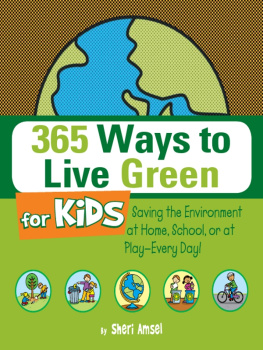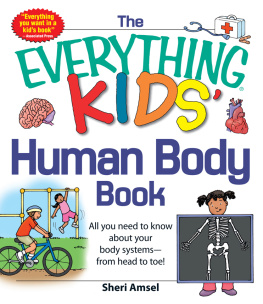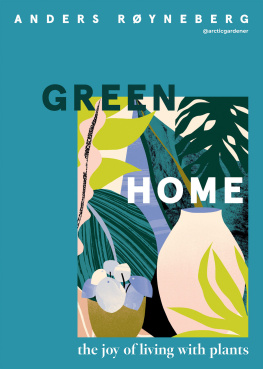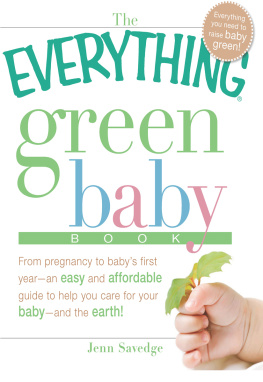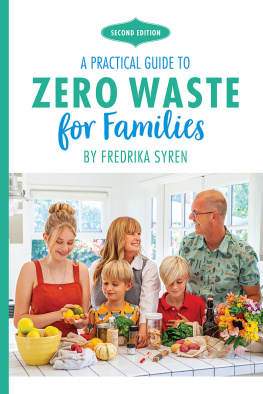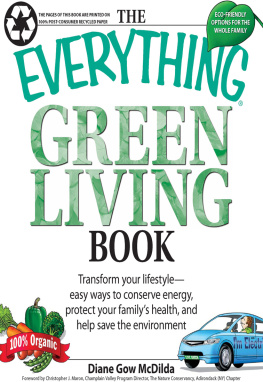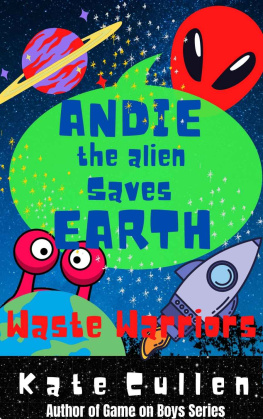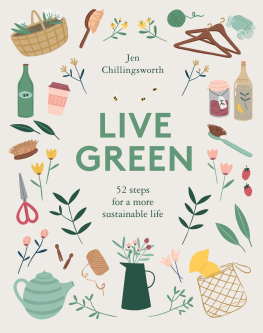
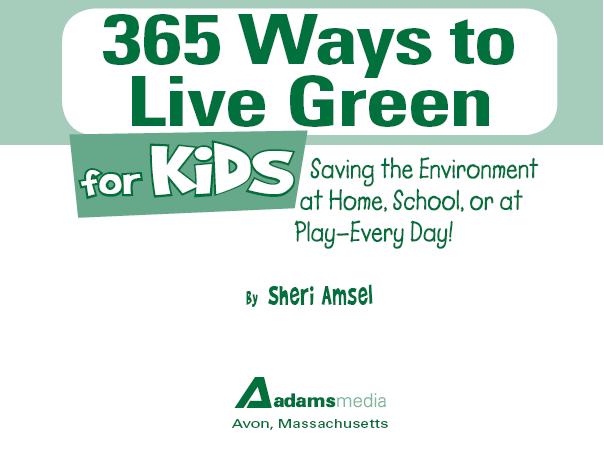
Copyright 2009 by F+W Media, Inc.
All rights reserved.
This book, or parts thereof, may not be reproduced in any form without permission from the
publisher; exceptions are made for brief excerpts used in published reviews.
Published by
Adams Media, a division of F+W Media, Inc.
57 Littlefield Street, Avon, MA 02322. U.S.A.
www.adamsmedia.com
ISBN 10: 1-60550-634-6
ISBN 13: 978-1-60550-634-0
eISBN: 978-1-44052-017-4
Contains material adapted and abridged from The Everything Kids Environment Book
by Sheri Amsel, copyright 2008 by F+W Media, Inc.,
ISBN 10: 1-59869-670-X, ISBN 13: 978-1-59869-670-7.
Printed in Canada.
JIHGFEDCBA
Library of Congress Cataloging-in-Publication Data
is available from the publisher.
This publication is designed to provide accurate and authoritative information with regard to the subject matter covered. It is sold with the understanding that the publisher is not engaged in rendering legal, accounting, or other professional advice. If legal advice or other expert assistance is required, the services of a competent professional person should be sought.
From a Declaration of Principles jointly adopted by a Committee of the American Bar Association
and a Committee of Publishers and Associations
Many of the designations used by manufacturers and sellers to distinguish their product are claimed as trademarks. Where those designations appear in this book and Adams Media was aware of a trademark claim, the designations have been printed with initial capital letters.
The pages of this book are printed on 100% post-consumer recycled paper.
This book is available at quantity discounts for bulk purchases.
For information, please call 1-800-289-0963.
Contents
CHAPTER 1
FOOD FOR THOUGHT
CHAPTER 2
EARTH 101
CHAPTER 3
FIGHT POLLUTION!
CHAPTER 4
ANIMALS
CHAPTER 5
PLANT LIFE
CHAPTER 6
ENERGY AND POWER
CHAPTER 7
RECYCLE!
CHAPTER 8
AT HOME, AT SCHOOL, ANDBEYOND
Introduction
Congratulations on getting this book! You are about to set off on an adventure to save the planet. Your adventure will last more than 365 daysit will last a lifetime!
This book has lots of fun facts and stories about the environment, as well as games you can play with your friends, activities you can do on your own or with your family, and special projects that will help make our planet a cleaner, better place.
Best of all, when you share what you learn with other people, you help spread the word of how important it is to go green. All kinds of people can learn from your example and the good work that you do.
So when you learn something new from this book or find a new way to go green, tell your teacher, your parents, your family, and your friends what you have learned and invite them to do projects with you. We are all part of the same world, and when we work together, we can do great things!
Our planet is a special place. Even when you do something that appears smallrecycling cans or paper, reusing something instead of throwing it away, or turning off the water while you brush your teethyou are helping keep the planet clean and healthy. Some of the projects or activities in this book are big, and some are small. Doing any one of them will help the earth and make you a greener person!
Remember that every great journey starts with a single step. Deciding to go green is a decision we make with every new day, and even the smallest choice to recycle, reuse and reduce goes a very long way. You can do it!
So start reading! Saving the planet is fun!
CHAPTER 1
FOOD FOR THOUGHT
RETHINK YOUR ENVIRONMENT
What is the environment? The answer may surprise you. The environment is all living and nonliving things on Earth. Your indoor environment includes your family, pets, and houseplants, but it also includes the furniture, floors, windows, and even the air temperature around you! Outside, your environment becomes the trees, grass, insects, birds, clouds, wind, and ground. Environments can be big: as big as an entire planetor small: smaller than you can see. If you are a beetle, your environment could be a rotten log or a garden. If you are a lake trout your environment is the sand, rocks, ducks, water striders, and the very water you live in.
The first step to going green is to know, understand, and appreciate that you are part of many environments, big and small. Your actions have an effect on those environments: some actions can promote the health of the environment, and some actions do not. Its important that you realize that your actions do make a difference in the health of the environment.
NAME THAT ENVIRONMENT!
Sit in a circle with friends or your family and take turns naming an animal or plant. Then the person to your right has to name five to ten traits of the environment of that suggested animal or plant. For example, if they say:
cactus, you might say: sand, heat, lizard, tortoise, rocks, rattlesnake, wind, scorpion, vulture, roadrunner. You may learn something new!
DRAW THE ENVIRONMENT
Find pictures of animals in old magazines and trace them (or cut them out and paste them) onto the center of a large sheet of paper. You could also look up images on the Internet: get your parent to help you, if need be, to find images and print them out. Now draw the animals environment around them. For example, if you have traced an African elephant, add the grassy savannah. Add a baobab tree and a bright blue sky. Add a herd of zebras and a giraffe. This is an elephant environment! Make the drawing as big as you like to make room for a big environment. And dont just do land animals: try doing this exercise with aquatic life or insects. Choose animals or organisms youve never heard of before, so the exercise will help you learn lots of cool stuff. If you do several animals or organisms in the same geographical environment, maybe you can get a large piece of poster board and make a collage! Think big!
DESC RIBE YOUR ENVIRONMENT
You are part of the environment, too. What is your habitat like? What is your diet like? Imagine if a biologist or scientist described you as an animal, and made a detailed study of your habits, your features, and how you relate to your environment. You may learn a thing or two about yourself if you take a step back and describe yourself as you would an animal or an organism! Dont leave out how you relate to other creatures in your environment, and how many resources you use as part of your daily life.
Consider this: What about your environment could change? For example, could you change your diet? Could you change how much you eat or drink? Think about how you relate to other animals, organisms, or people in your environment: how could that change? What effect do you think it would have?
Often, when people think about changing their habits or their lifestyle, they think about themselves in isolation. They think: Im changing this about me because its what I want. Once you describe your environment and see your relationship to everyone and everything in it, maybe youll think of changes you could make because its what your
Next page
